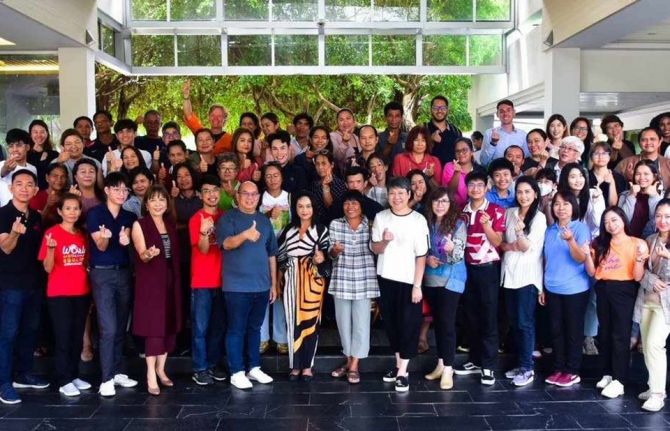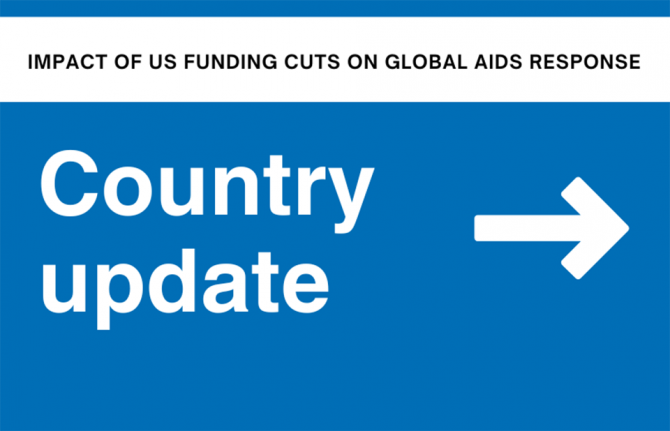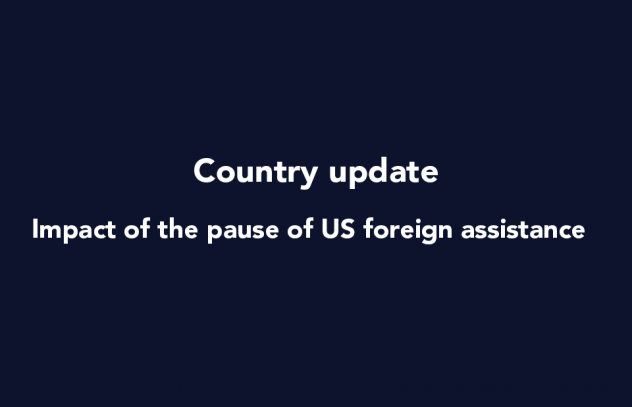
Feature Story
UNAIDS Executive Director praises Iran’s evidence-informed approach to HIV in prison settings
13 October 2010
13 October 2010 13 October 2010
Michel Sidibé meets with H.E. Mohammad Reza Rahimi, First Vice President of the Islamic Republic of Iran. Credit: UNAIDS
In nearly all countries, HIV prevalence among prisoners is significantly higher than in general population. A variety of factors contribute to the spread of HIV in prison settings, including unsafe injecting drug use, unprotected sex, tattooing with contaminated equipment and poor prison health services.
In the Islamic Republic of Iran, HIV prevalence among prisoners is about eight times higher than in the general population. Injecting drug use is the main mode of HIV transmission, accounting for more than 70% of reported HIV cases in Iran.
A visit this week to Iran by UNAIDS Executive Director Michel Sidibé highlighted the country’s progressive work in addressing its HIV epidemic in prisons and among people who inject drugs. Iran’s 250 prisons, rehabilitation camps and juvenile correctional centers house approximately 180 000 inmates. Nearly half of all inmates are imprisoned on drug-related charges.
“What I saw in Qezel Hessar Prison is an evidence-based approach marked by tolerance, pragmatism and compassion,” said Mr Sidibé after touring the largest detention center in the region. “I am impressed with the comprehensive package of HIV prevention, treatment, care and psychosocial support that the prison provides.”
Located near Karaj City, the Qezel Hessar Prison has 19 000 inmates, the majority incarcerated on drug-related offences. The facility offers a wide range of HIV-related services, including opioid substitution therapy, antiretroviral therapy, voluntary testing and counselling, access to condoms and sterile razors, psychotherapy and other behavioral interventions.
Qezel Hessar Prison provides methadone maintenance therapy to more than 2700 inmates on a daily basis, a 30-fold increase since 2003. Like most other prisons in country, married prisoners are allowed conjugal visits with their spouses and are provided with private rooms and condoms.
Executive Director meets senior Iranian officials and people living with HIV

Michel Sidibé meets with a group of HIV-positive people at the "Positive Club" in the Iranian Research Center for HIV and AIDS. Credit: UNAIDS
In meetings with First Vice President Mohammad-Reza Rahimi and other top Iranian officials, Mr Sidibé urged authorities to work towards the goals of “zero new HIV infections among drug users” and “zero newborns with HIV.” Iranian authorities expressed the commitment of the Islamic Republic of Iran to address the HIV epidemic based on the Islamic concept, “If you save one life, you are saving humanity.”
As part of his official mission, Mr Sidibé also visited a “Positive Club” located in the Iranian Research Center on HIV and AIDS. Addressing a group of people living with HIV, he said: “When I hear the words “hope,” “happiness” and “job,” I feel that our efforts have not been wasted.”
During the visit, Mr Sidibé emphasized the work of Iranian health authorities in helping restore the lives and dignity of people living with HIV through the establishment of such Positive Clubs and the provision of information, antiretroviral medicines and other HIV-related services.
Speaking on behalf of people living with HIV, the head of the Positive Club’s council told Mr Sidibé that AIDS is a very difficult area to address. “It requires courage and patience, and you are one of those people who have the courage and patience to work in this area,” he said. “We are happy to have your support, and we are ready to work with you together.”



